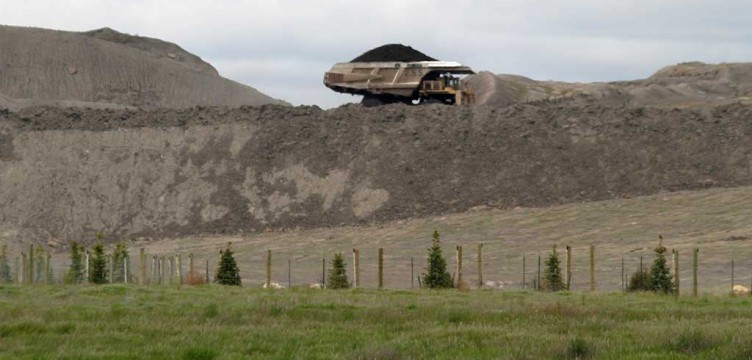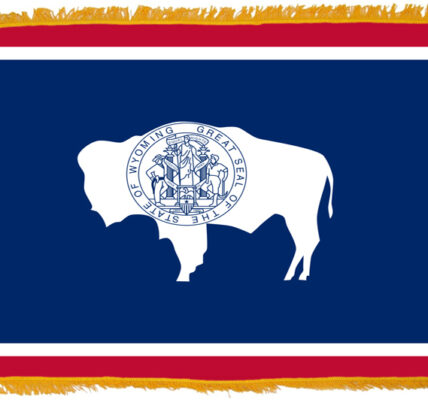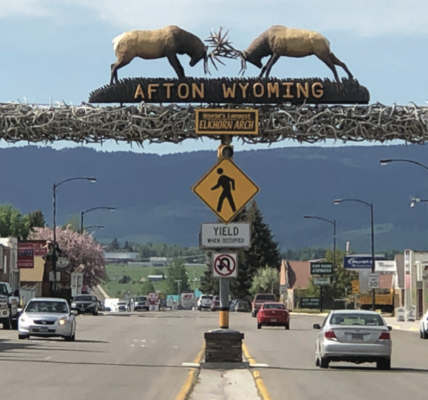By Nicole Pollack
Casper Star-Tribune
Via- Wyoming News Exchange
CASPER — Entangled in the congressional infrastructure debate, Wyoming’s biggest source of mine cleanup funding expired last week, raising questions about the future of reclamation.
The federal Abandoned Mine Land (AML) program levies a tax on coal producers, then distributes that money to restoration projects in historic mining states. Launched as part of the Surface Mining Control and Reclamation Act of 1977, it’s amended and re- authorized every 15 years. Intermediary legislation trimmed the fee paid by surface mines from 35 cents per ton of coal to 28 cents.
Lawmakers have known since 2006 that the program would sunset at the end of the 2021 fiscal year. As the reauthorization dead- line neared, Sens. John Barrasso, R-WY, and Joe Manchin, D-W.V., negotiated a new surface mine fee of 22.4 cents.
“Ranking Member Barrasso has been very active in trying to continue and improve the AML program. He believes it’s a serious issue and deserves a practical, bipartisan solution,” Sarah Durdaller, Barrasso’s committee press secretary, wrote in an email to the Star-Tribune.
Under the senators’ plan, the 20% fee reduction would be more than offset by the addition of $11.3 billion in general treasury money — the first significant influx of federal dollars into the AML program — over the next 13 years.
The AML proposal is included in the $1 trillion infrastructure bill, but with negotiations stalled in the House, the fee timed out on Friday.
For state reclamation agencies, the lapse isn’t an immediate worry. Next year’s AML funding has already been collected from coal companies and will be released to states in the spring. States won’t know until December whether, or how significantly, future payments could be affected.
“We expect reauthorization is going to happen at some point in time,” said Don Newton, administrator of the Wyoming Department of Environmental Quality’s Abandoned Mine Land division.
Coal fees are paid quarterly, and if the infrastructure bill — or a standalone bill — sets a new fee by the end of the year, the pro- gram will continue uninterrupted. Otherwise, states are likely to see progressively fewer reclamation dollars with every missed quarter.
While there’s still money left in the AML fund, if the fee is never reinstated, those funds will run out long before states can complete outstanding reclamation projects.
“If reauthorization didn’t happen, then pretty much everyone would have to tighten their belts significantly,” Newton said.
In 1984, the federal government certified that Wyoming had restored all of its high-priority coal sites, enabling the state to use its allocation of AML funds toward non-coal cleanup, including abandoned gold, silver and uranium mines. But 80% of state AML money still goes toward coal reclamation projects in early mining communities like Rock Springs, Hanna and Glenrock.
“The more you look for, the more you see as time goes by,” Newton said. “Things like subsidence features — holes in the ground — open up that are above mines. So we’re constantly dealing with new mining issues.”
A decades-old agreement with the Department of the Interior has ensured that half of the revenue collected from Wyoming mines gets returned to the state. It received $35.8 million from the program last year. And in spite of the proposed 20% fee cut, Wyoming would get more reclamation money under the new proposal, Newton said.
But because the AML program takes money from current mining operations and redirects it to historic cleanup sites, amending that structure always gets complicated, said Shannon Anderson, staff attorney for the Powder River Basin Resource Council.
“Every time reauthorization comes around, there’s quite a bit of dance and negotiation between coal producing states that produce a lot currently, like Wyoming, and states that had produced a lot historically, but don’t produce a lot now, like Pennsylvania,” Anderson said.
The compromise between Barrasso and Manchin has been well received. As coal demand wanes, producers welcome the tax relief.
“It’s been a good program for Wyoming,” said Travis Deti, executive director of the Wyoming Mining Association. “On the coal side, though, being the ones that pay the bills, it’s expensive. My operators in the state of Wyoming, they paid roughly $80 million into that fund last year. And it’s become a burden, because the industry right now just can’t afford to pay the rates that we’re paying right now.”
Conservation groups, meanwhile, are mollified by the proposed $11.3 billion addition to the AML fund. Since 1977, coal producers’ fee payments have amounted to roughly $11.6 billion, with just over $6 billion redistributed to states.
Still, the bipartisan plan hasn’t gained much legislative traction.
“I think for most of the Congress, it’s just not a priority. Because if you’re not a coal state, it doesn’t touch you at all,” Anderson said.
For coal states, however, reauthorization is a major priority. While Wyoming’s equivalent oil and gas reclamation effort, the Orphan Well Program, is funded through a state production tax, its mine restoration projects rely on federal financing.
Wyoming administrators may not know until January whether to start making contingency plans. Ongoing reclamation hangs in the balance for now.







